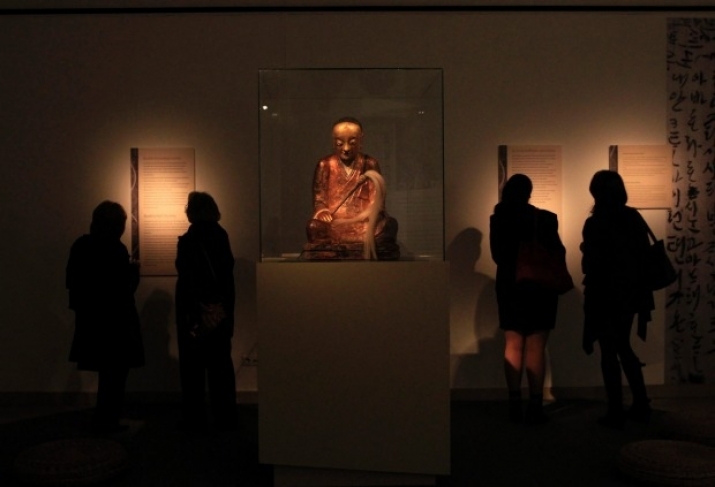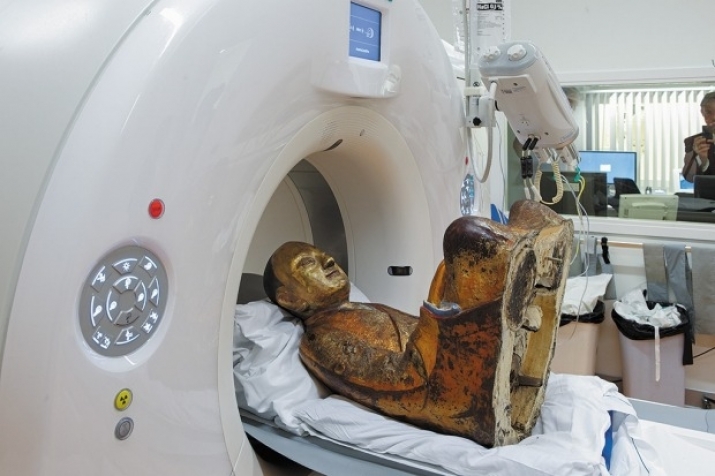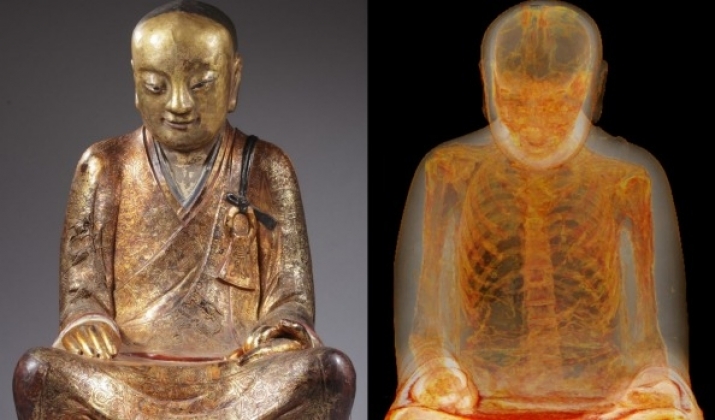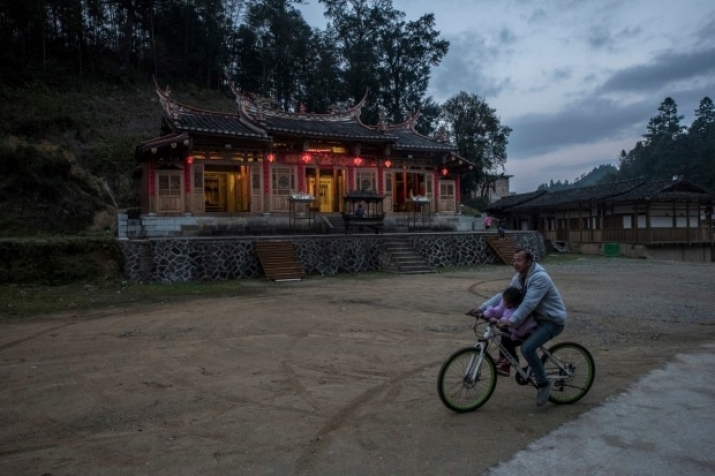NEWS
Chinese Villagers Take Dutch Art Collector to Court over “Mummified Bodhisattva”
 The statue on display in Budapest. From afr.com
The statue on display in Budapest. From afr.comOn 14 July, a court in Amsterdam will rule on a long-standing dispute between a Dutch art collector and a village in China over a Buddhist statue containing a mummified corpse that the villagers believe to be the remains of Zhang Gong, a locally revered bodhisattva, which was stolen from the village temple more than two decades ago.
The mummy was discovered in 1997 by Amsterdam-based restorer of Asian art and antiquities Carel Kools, who received the life-sized gold-plated Buddha statue from Dutch collector and architect-cum-interior designer Oscar van Overeem. “The statue came to me in a really bad state,” Kools recalled. “There was lots of damage from insects. . . . So we removed the planks [the statue] was sitting on and discovered these linen rolls.” After removing the linen, Kools noticed a pair of legs and realized that he was looking at the remains of a human being. An X-ray of the statue—which Kools was able to arrange as he was working part time at a hospital—confirmed that the statue indeed contained a mummy, the skeleton of which was almost fully intact, missing only some finger bones. (Financial Review)
Van Overeem, a collector of Tang dynasty art, had bought the statue as part of a collection of artifacts from his agent Benny Rustenburg in 1995. Van Overeem beleived the statue dated to the Ming dynasty (1368–1644), but carbon dating revealed that the cushion and the mummy were much older, dating to the Song dynasty (960–1279). The statue remained in the possession of Van Overeem for 18 years, but when he lent it to an exhibition in Budapest, international attention for the statue increased. The statue was recognized by a villager from the village of Yangchun in Fujian Province, as the mummy of Zhang Gong, which had been stolen in 1995.
 After art restorer Carel Kools discovered the mummy inside the statue, he brought it to a hospital to be X-rayed. From afr.com
After art restorer Carel Kools discovered the mummy inside the statue, he brought it to a hospital to be X-rayed. From afr.com The X-ray revealed a nearly complete skeleton encased within the statue. From afr.com
The X-ray revealed a nearly complete skeleton encased within the statue. From afr.comZhang Gong, or Zhang Qishan, was a renowned herbalist and Buddhist monk whose devoutness had earned him the honorific title gong (lord), and who is revered as a bodhisattva who chose the village of Yangchun as the location of his final rebirth. The villagers say they have worshipped the statue containing his remains for 1,000 years, even hiding it from state officials during China’s Cultural Revolution to save it from destruction. But in December 1995, the statue disappeared. The villagers have never stopped looking for the statue, and when one villager reported that he had found the artifact at a museum in Budapest, they quickly contacted Liu Yang, a Beijing-based lawyer specializing in recovering Chinese cultural property. Liu Yang, in turn, contacted HIL, a Dutch law firm, that is bringing the case against Oscar van Overeem to court next week.
Van Overeem and his counsel inisist that the statue is, in fact, not the stolen relic from Yangchun and that it is merely a case of mistaken identity, arguing that the timing of the statue’s disappearance does not coincide with its purchase: Van Overeem claims to have purchased the statue in late 1995, and that the statue had been shipped to Amsterdam from Hong Kong in mid-1995—months before the statue in Yangchun was stolen. However, Van Overeem has no evidence to back up this version of events, since he has no receipt from Rustenburg, who is now retired and living in the Philippines, and has not responded to requests for comment.
Meanwhile, the villagers are adamant that the mummy is theirs, despite a lack of hard evidence for their own claim. “Just from the pictures we saw from the exhibition in Hungary, we knew instantly,” said retired teacher Lin Lemiao. (Financial Review)
“There can be no doubt that [the mummy] is ours.” added Lin Qizhou, a local official. “It is simply laughable to think that this is not our mummy. All the people here have been visiting the temple for their entire lives, and we all just know. It is not even open to debate.” (Financial Review)
 Puzhao temple in Yangchun, where the statue containing the remains of Zhang Gong was housed before it was stolen in 1995. From afr.com
Puzhao temple in Yangchun, where the statue containing the remains of Zhang Gong was housed before it was stolen in 1995. From afr.comThe strongest piece of evidence in the villagers’ favor is the mummy’s cushion, which reads: “Since patriarch Zhang Gong Liuquan [a term denoting the entire body] from the Puzhao Temple manifested himself, years passed by which were not recorded. Since [missing characters] this hall . . . hardly any people visited, no incense rose and disasters occurred. The leaders of the village, Lin Zhangxin and Lin Shixing, touched the hearts of the villagers to raise money . . . to remodel and redecorate the valuable statue of the patriarch.” (Financial Review)
In 2014, Chinese president Xi Jinping lauded traditional Chinese culture as a “foundation for China to compete in the world,” and since then the Chinese government has become more actively involved in retrieving historical artefacts from overseas collections. It also no longer accepts cultural artifacts as donations from Chinese benefactors who buy them back, since this creates a market for stolen artifacts. So when Van Overeem attempted to sell the statue to a wealthy benefactor who offered to present it to China, state officials blocked the transaction, stating that they would not accept the donation. In November 2015, Van Overeem gave the statue to an anonymous collector who has kept its location a secret from the rest of the world, and from Van Overeem himself. So whatever the court’s verdict may be next week, Van Overeem has insisted: “I cannot deliver that statue, no matter what.” (Financial Review)
See more
Millions at stake as Chinese villagers take collector to court over "man in the Buddha" (Financial Review)














